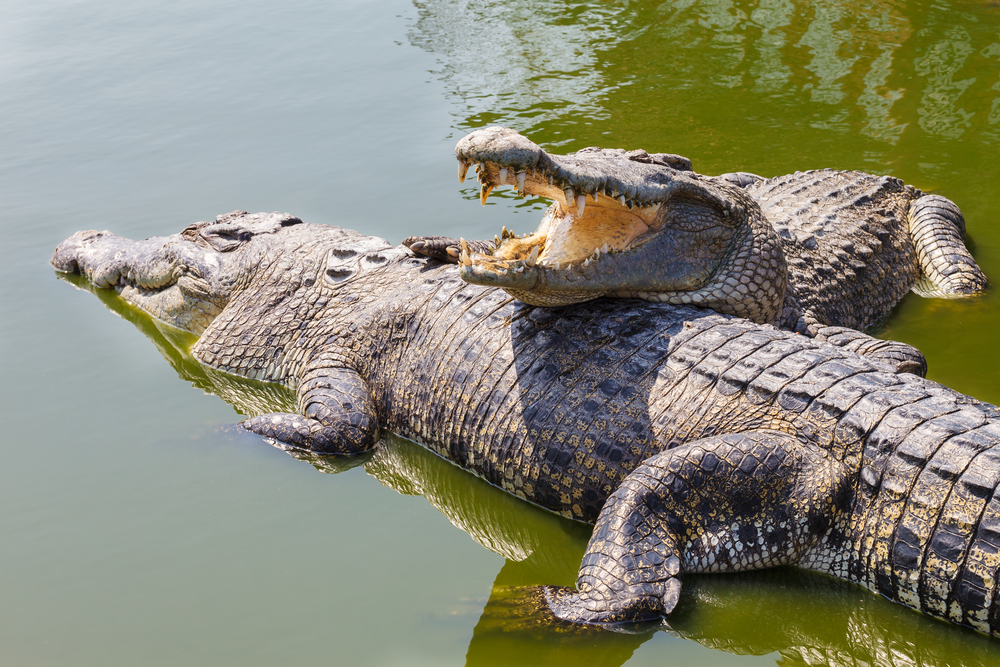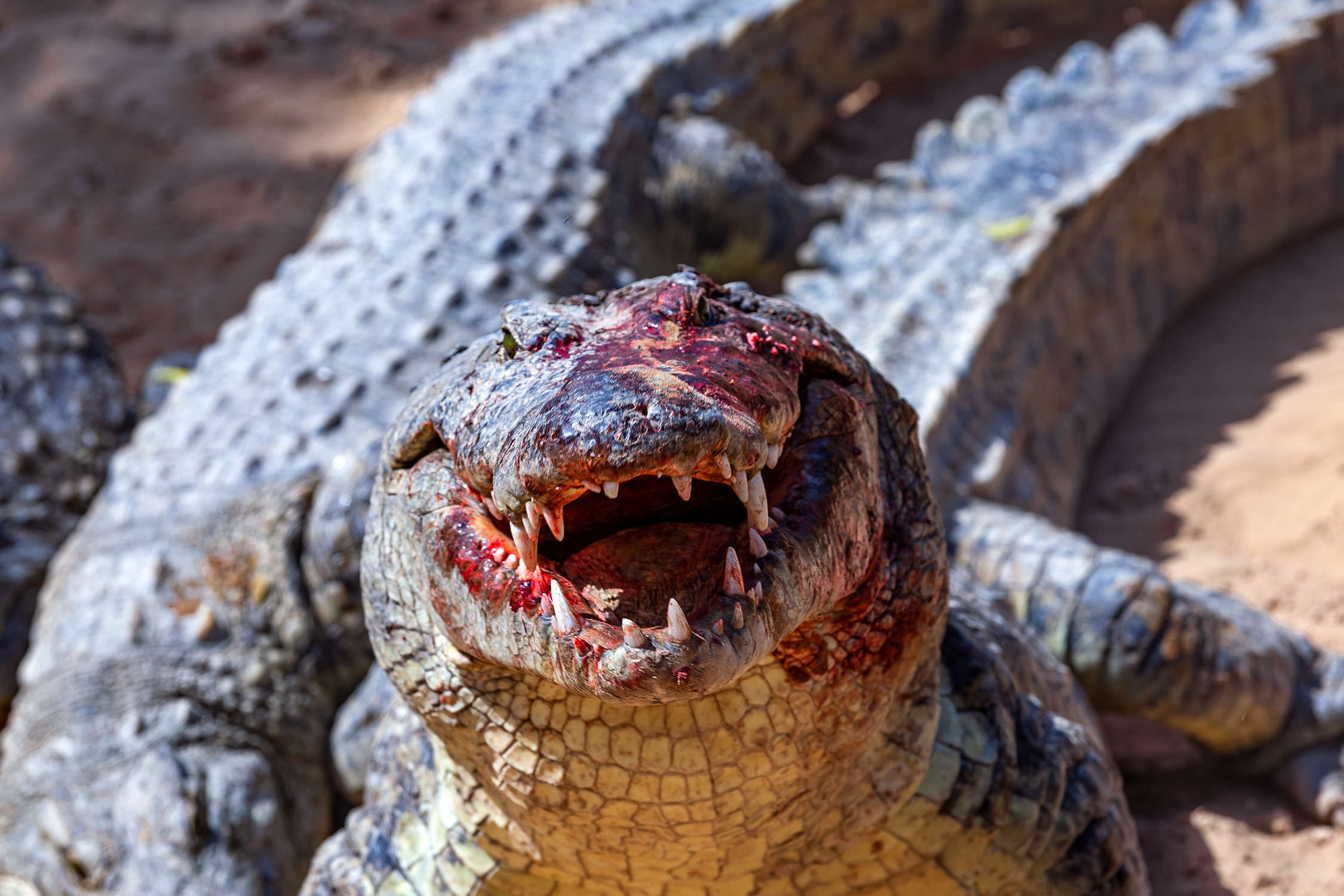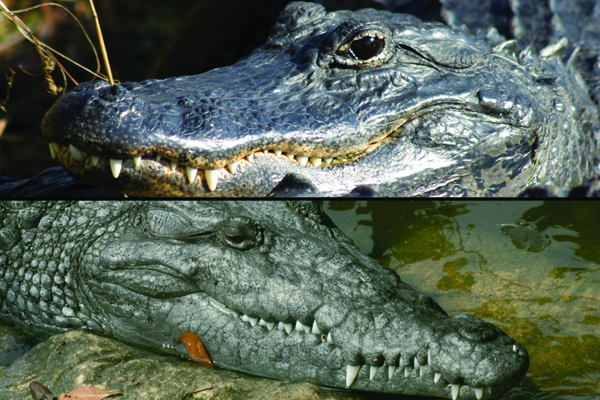Crocodiles: Facts and photos of some of the toothiest reptiles
Don't shed a single crocodile tear, reptile lovers; these amazing crocodile facts are sure to delight.

Crocodiles are large reptiles found in tropical regions of Africa, Asia, the Americas and Australia. They are members of the order Crocodilia, which also includes caimans, gharials and alligators.
There are 13 crocodile species, and they range in size. The smallest, the dwarf crocodile (Osteolaemus tetraspis), grows to about 5.6 feet (1.7 meters) in length and weighs 13 to 15 pounds (6 to 7 kilograms), according to the Zoological Society of London. The largest, the saltwater crocodile (Crocodylus porosus), can grow up to 23 feet (6.5 m) in length and can weigh up to 2,000 pounds (907 kg), according to Oceana.org.
What do crocodiles eat?
Crocodiles are carnivores, which means they eat only meat. In the wild, they feast on fish, birds, frogs and crustaceans. Occasionally, crocs cannibalize each other. In captivity, they eat small animals that have already been killed for them, such as rats, fish or mice. They also eat live locusts, according to The Australian Museum.
In the wild, crocodiles clamp down on prey with their massive jaws, crush it and then swallow the prey whole. They cannot chew or break off small pieces of food as some other animals do.
To help with digestion, crocodiles swallow small stones that grind up the food in their stomachs. Thanks to their slow metabolism, crocodiles can survive for months without food.
Where are crocodiles found?
About 100 million years ago, during the Mesozoic era, the Crocodilia order included some of the top animals in the food chain. Today, crocodiles are found in tropical regions of Africa, Asia, Australia and the Americas. They normally live near lakes, rivers, wetlands and even some saltwater regions.
Crocodiles live in tropical climates because they are cold-blooded and cannot generate their own heat. During colder months, they enter a hibernation-like state of inactivity known as aestivation, which involves slowing down all bodily processes, according to Animalia. Crocodiles also aestivate during long periods of drought. To create a place to hibernate, they dig out a burrow in the side of a riverbank or lake and settle in for a long sleep.
Get the world’s most fascinating discoveries delivered straight to your inbox.
Are crocodiles dinosaurs?
Though they share many characteristics and appeared on the planet during the Mesozoic era, crocodiles and dinosaurs are not the same.
Dinosaurs and crocs both belong to a reptile subclass known as archosaurs, which first appeared in the fossil record about 250 million years ago, during the Triassic period. By the end of the Triassic, archosaur evolution split into two paths: One branch of archosaurs evolved into the oldest relatives of crocodiles and alligators, and the other branch evolved into dinosaurs, birds and flying reptiles (also known as pterosaurs).
About 66 million years ago, at the end of the Cretaceous period, a mass extinction wiped the nonavian dinosaurs and flying reptiles off the planet. Today, crocodilians and birds are the only surviving archosaurs.
Baby crocodiles
Crocodiles lay an average of 12 to 48 eggs at a time. The hatchlings stay in their eggs for 55 to 100 days. The sex of each crocodile baby depends on the temperature of its egg during a critical moment during the first half of its incubation period.
Crocodile babies measure about 7 to 10 inches (18 to 25 centimeters) long when they are born and don't mature until they are 4 to 15 years old. How long a crocodile lives depends on its species; some, such as the Dwarf crocodile, live to around 40 years, while others, such as the Nile crocodile, live up to 80 years, according to Animalia.
Are crocodiles endangered?
The Cuban crocodile is one of the world's most endangered species of crocodile. It is considered critically endangered and has a population of only about 4,000, according to the International Union for Conservation of Nature (IUCN). Poaching is a constant threat to the species.
The American crocodile is considered vulnerable by the IUCN, but its population is increasing.
Alligators vs. crocodiles
How are alligators and crocodiles different? For one, an alligator's jaw is U-shaped, while a crocodile's is V-shaped, Live Science previously reported. In addition, crocodiles' teeth stick up over their upper lip when their mouths are closed, whereas alligators' teeth do not.
Another difference between alligators and crocodiles is that crocs have salt glands on their tongues. These modified salivary glands help crocs tolerate life in salt water. Alligators and caimans have lost the ability to secrete excess salt through the tongue glands and, therefore, prefer to live in freshwater areas, according to the Crocodilian Biology Database.
Crocodile taxonomy
Here is the taxonomy of crocodiles, according to the Integrated Taxonomic Information System (ITIS):
Facts about crocodiles
- When a crocodile loses a tooth, it is quickly replaced. These reptiles can go through 8,000 teeth over a lifetime, according to the San Diego Zoo.
- Crocodiles don't sweat. To keep cool, they open their mouths in a process called "mouth gaping," which is a lot like panting.
- "Crying crocodile tears" refers to a person expressing insincere remorse. It is a saying that goes back to about the 16th century. However, crocodiles do in fact produce tears, according to the Crocodilian Biology Database. Their lacrimal glands secrete a fluid behind their third eyelid, called a nictitating membrane. The fluid helps clean the eye, lubricate it and reduce bacteria. Crocodile tears aren't usually noticeable unless the croc has been out of the water for a while and the eyes begin to dry out.
- A crocodile's jaws can apply 3,700 pounds of pressure per square inch, according to National Geographic. This means that they can bite through a human arm or a leg with no problem. For comparison, a human jaw produces only about 100 pounds of pressure per square inch. The crocodile jaw has very little opening strength, though; a crocodile's mouth can be held shut with just a rubber band.
- In addition to their strong jaws, crocodiles have very keen hearing. It is so good, in fact, that they can hear their babies calling from inside their eggs.
- Crocodiles are very fast swimmers, which helps them catch their prey. They can swim up to 18 mph (29 km/h) and hold their breath underwater for around one hour, according to Australia’s Northern Territory government. Crocodiles aren't as fast on land, where they can run only up to 11 mph (18 km/h) for a short distance.
Nina Sen contributed to this article. This article was updated on Mar. 4, 2022, by Live Science Senior Writer Brandon Specktor.
Additional resources
Learn more fun crocodile facts from the San Diego Zoo's crocodilian info page. Read more about crocodile conservation and the conservation status of different crocodile species via the IUCN. Concerned about crocodile attacks on humans? Check out CrocBITE, the worldwide database of crocodilian attacks.
Bibliography
Britton, A. (n.d.). Crocodilian Biology Database. Retrieved February 28, 2022, from http://crocodilian.com/cnhc/cbd-faq-q1.htm
Handwork, B. (2012, March 15). Crocodiles have strongest bite ever measured, hands-on tests show. National Geographic. https://www.nationalgeographic.com/animals/article/120315-crocodiles-bite-force-erickson-science-plos-one-strongest
Integrated Taxonomic Information System. (n.d.). Crocodylus. Retrieved February 28, 2022, from https://www.itis.gov/servlet/SingleRpt/SingleRpt?search_topic=TSN&search_value=174360#null
Northern Territory Government. (2016, July 4). Be CrocWise. https://becrocwise.nt.gov.au/about-crocodiles/did-you-know
Ross, J. P. (2008, June 13). Crocodile. Britannica. https://www.britannica.com/animal/crocodile-order
San Diego Zoo Wildlife Alliance. (n.d.). Crocodilian. Retrieved February 28, 2022, from https://animals.sandiegozoo.org/animals/crocodilian
Targarona, R. R., Soberón, R. R., Cotayo, L., Tabet, M. A. & Thorbjarnarson, J. (2008). Cuban Crocodile. The IUCN Red List of Threatened Species 2008. https://dx.doi.org/10.2305/IUCN.UK.1996.RLTS.T5670A11516438.en. Retrieved on February 28, 2022.
Zoological Society of London. (n.d.). Dwarf crocodile. Retrieved February 28, 2022 from http://www.edgeofexistence.org/species/dwarf-crocodile/

- Brandon SpecktorEditor





